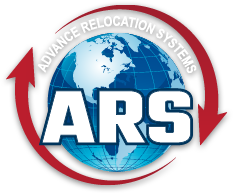Top local movers for Baltimore to St. Paul moves
Searching for a dependable local mover in Baltimore that also provides long-distance services to St. Paul can feel overwhelming. That’s where we come in — we’ve analyzed 58 local movers in Baltimore who specialize in long-distance relocations, factoring in cost, services, and customer feedback.
These are the best local moving companies for getting from Baltimore to St. Paul.
- Von Paris Moving & Storage: 4.64 out of 5 stars
- All My Sons Moving & Storage: 4.44 out of 5 stars
- Orly Moving Systems, Inc.: 4.44 out of 5 stars
- Bellhop Moving: 4.38 out of 5 stars
- Advance Relocation Systems: 4.44 out of 5 stars
Company Info
Years in Business: 133
DOT #: 070851
Alternate Names: Von Paris Moving & Storage, Inc. , Von Paris Moving & Storage , B Von Paris Moving & Storage , Commercial Relocation Systems , CRS
Services Offered
- Local moves
- Interstate moves
- International moves
- Packing
- Unpacking
- Offices
- Pianos
- Hot Tubs
- Pool Tables
- Art
- Antiques
- Grandfather clocks
- Crating
- Shipment tracking
- Storage
- Fragile-only packing
- Pay by cash
- Pay by credit card
Company Info
Years in Business: 26
DOT #: 902281
Services Offered
- Local moves
- Interstate moves
- International moves
- Packing
- Unpacking
- Offices
- Pianos
- Antiques
- Crating
- Storage
- Safes
- Pay by credit card
- Deposit Required
Company Info
Years in Business: 32
Services Offered
- Local moves
- Interstate moves
- International moves
- Packing
- Unpacking
- Offices
- Pianos
- Pool Tables
- Art
- Antiques
- Crating
- Storage
- Pay by money order
- Pay by cash
Company Info
State license #: 2878240
Years in Business: 13
DOT #: 2878240
Alternate Names: Bellhops Moving Services
Services Offered
- Local moves
- Interstate moves
- Packing
- Unpacking
- Storage
- Pay by credit card
- Deposit Required
Company Info
State license #: 125550
Years in Business: 59
DOT #: 125550
Alternate Names: Advance Storage Movers , Advance Corporation , Advance Movers
Services Offered
- Local moves
- Interstate moves
- International moves
- Packing
- Unpacking
- Offices
- Pianos
- Art
- Antiques
- Crating
- Shipment tracking
- Full-valuation coverage
- Storage
- Pay by cash
- Pay by credit card
- DOD certified
How much does it cost to move from Baltimore to St. Paul?
Movers in Maryland generally charge an average of $125 per hour. Check out these typical costs for a full-service moving company, moving container, or truck rental:
| Move size | Moving company | Moving container | Rental truck |
|---|---|---|---|
| Studio / 1 bedroom | $1,136 – $4,331 | $892 – $2,114 | $738 – $1,338 |
| 2 – 3 bedrooms | $2,523 – $5,868 | $1,506 – $3,009 | $783 – $1,638 |
| 4+ bedrooms | $3,811 – $7,436 | $1,993 – $3,891 | $936 – $1,936 |
Cost to hire movers from Baltimore to St. Paul
Moving a studio or one-bedroom home from Baltimore to St. Paul typically costs between $1,136 and $4,331. For a two- or three-bedroom home, expect prices to fall between $2,523 and $5,868 when moving from Baltimore to St. Paul. If you’re tackling a large move (think four or five bedrooms) from Baltimore to St. Paul, you’re looking at costs ranging from $3,811 up to $7,436.
Cost of moving containers from Baltimore to St. Paul
If you’re relocating from Baltimore to St. Paul, you’ll typically spend between $892 and $2,114 for a small move. Have a two or three-bedroom home? Plan for costs to range from $1,506 up to $3,009. If you’re moving a larger home — four bedrooms or more — expect to pay anywhere between $1,993 and $3,891. For a full breakdown, check out our complete PODS cost guide.
Explore our top budget-friendly moving container companies for your move from Maryland.
Cost of moving truck rentals from Baltimore to St. Paul
Renting a moving truck is typically the most budget-friendly choice for a Baltimore to St. Paul move, but remember, you’ll be responsible for all the heavy lifting, packing, and driving on your own.
If you’re moving from a studio or one-bedroom place with a rental truck, expect to pay between $738 and $1,338. For a two- or three-bedroom move, costs usually range from $783 to $1,638. If you’re tackling a four-bedroom or bigger move, your rental truck will likely run between $936 and $1,936.
Estimated fuel costs are already factored into these quotes.
Major factors affecting moving costs from Baltimore to St. Paul

What to know before moving from Baltimore to St. Paul
Expect a bump in monthly expenses after the move – St. Paul runs about 63% higher for singles and -16% higher for families than Baltimore.
Singles spend around $3,633 in Baltimore versus $2,223 in Baltimore; families pay $4,290 compared with $5,088.
Dig into the side-by-side details here:
| Baltimore | St. Paul | |
|---|---|---|
| Average 1 BR rent | $1,892 | |
| Average 3 BR rent | $3,333 | |
| Average home value | $180,790 | $278,221 |
| Average income (per capita) | $58,349 | $63,483 |
| Cost of living (single) | $2,223 | $3,633 |
| Cost of living (family of four) | $5,088 | $4,290 |
| Unemployment rate | 7.9% | 4.9% |
| Sales tax | 6.0% | 9.88% |
| State income tax | 5.75% | 9.85% |
- Good news! When moving to St. Paul from Baltimore, you’ll benefit from rent being an estimated 16% less, allowing for a more relaxed budget.
- A larger mortgage budget will be necessary since home prices are about 54% higher in St. Paul than in Baltimore.
- Exciting news here, the average income is about 9% higher in St. Paul than in Baltimore, so you should have more to save or invest each month.
- Anticipate increased living expenses in St. Paul, as the cost of living for a single person in St. Paul is 63% greater than in Baltimore. This covers typical expenses like utilities, groceries, clothing, and transport.
- Relocating to St. Paul could provide savings on routine expenses for your family, including transportation, utilities, and groceries. The cost of living for a family is 16% lower than in Baltimore.
- With an unemployment rate approximately 38% lower than Baltimore, St. Paul boasts a favorable employment scene and thriving economic conditions, ideal for new arrivals.
- Sales taxes in St. Paul exceed those in Baltimore by 65%, which can mean paying extra for usual purchases like clothes and electronics.
- Income taxes are 71% higher in Minnesota than in Maryland. This means a larger portion of your earnings will go to state taxes, potentially reducing your take-home pay.
Take a detailed look at how everyday expenses stack up between Baltimore and St. Paul, from monthly bills to routine purchases:
| Living Expense | Baltimore | St. Paul |
|---|---|---|
| Basic utilities | $181.61 | |
| Cell phone plan | $56.81 | |
| Dozen eggs | $4.34 | |
| Loaf of bread | $3.91 | |
| Fast-food/casual eatery (one meal) | $20.00 | |
| Dinner for 2 (mid-range restaurant) | $80.00 | |
| Gym membership | $57.63 |
How life is different in Baltimore vs. St. Paul
| Baltimore | St. Paul | |
|---|---|---|
| Population | 585,708 | 303,176 |
| Transportation score | 8 | 8 |
| Walkability score | 64 | 60 |
| Bike friendliness score | 53 | 64 |
| Crime index | 72.72 | 50.86 |
| Safety index | 27.28 | 49.14 |
| Air quality | Good | Good |
- St. Paul’s population is about 48% less than Baltimore.
- St. Paul’s public transportation score is within about 5% of Baltimore, making them very similar.
- St. Paul is less walkable than Baltimore with a score of 60 out of 100 vs Baltimore’s 64 out of 100.
- With a score of 64 out of 100, St. Paul is more bike-friendly than Baltimore, which has a score of 53 out of 100. The higher a city’s score, the more suited it is to safely accommodating cyclists.
- St. Paul’s crime rate is lower than Baltimore with a score of 50.86 compared to Baltimore’s 72.72. This means that St. Paul neighborhoods are safer than 50.86% of all U.S. neighborhoods, and Baltimore neighborhoods are safer than 72.72%.
- St. Paul is considered to be safer than Baltimore with a safety index of 49.14 vs Baltimore’s 27.28.
- Air quality in St. Paul is Good, and in Baltimore it’s Good.
Other things to consider for your Baltimore to St. Paul move
- HOA rules: To keep things running smoothly, make sure you’re familiar with any HOA or community moving policies before the big day.
- Elevator reservation: If there is an elevator in your building, it’s a good idea to secure a reservation before your moving day.
- Truck parking permits: Research parking requirements in your destination city to ensure your truck won’t run into restrictions.
- State licensing: To operate legally within the state, Minnesota household goods movers must have a current permit from the Minnesota Department of Transportation (MnDOT). Before being granted operating authority, each moving company must file a public tariff, provide proof of insurance and submit a Certificate of Compliance to MnDOT. Make sure the moving company you use has a license before hiring.
- State regulator: You can check the status of a Minnesota moving license through the state’s public utilities commission.
- Moving Permits: You won’t need a moving permit in Minnesota, though it’s smart to double-check any local parking restrictions ahead of your move.
- Change of address: We recommend submitting your USPS change of address form at least one week before your move to ensure your mail gets forwarded to St. Paul without delay. You can select your official move date when completing the form. Start the process here.
- Moving company insurance: State laws differ on mover insurance. In Minnesota, opt for the budget-friendly Released Value Protection provided by movers at no extra charge. While economical, it offers minimal coverage at 60 cents per pound per article. For full value coverage of your items, consult with your chosen moving company for alternatives or consider a third-party insurance provider.
- Moving checklist: Our moving checklist will help you have the peace of mind that you’ve got everything covered.
Where to live in St. Paul
Ready to relocate to Pigs Eye? Here are some of the top neighborhoods to consider in St. Paul.
Best neighborhoods for singles
- Downtown
- St. Anthony Park
- Summit Hill
- Summit-University
- Union Park
Best neighborhoods for families
- Macalester-Groveland
- Summit Hill
- Highland
- Union Park
- St. Anthony Park
Things to do in St. Paul
Now that you’ve made the move to Minnesota, it’s the perfect time to explore St. Paul. From local hotspots to hidden gems, there’s something to enjoy for every lifestyle:
- Arts and culture: Cultural attractions in St. Paul include museums and art centers like the Science Museum of Minnesota, Minnesota History Center, Historic Fort Snelling, and James J. Hill House.
- Outdoor recreation: Outdoor lovers will appreciate Rice Park, Mears Park, Harriet Island Regional Park, and Indian Mounds Regional Park, along with many other spots perfect for walking, cycling, and fresh air adventures.
- Sports: Catch a live game and cheer on the home team at an Minnesota Wild (NHL)St. Paul Saints (MiLB)St. Paul Twin Stars (NPSL)Minnesota United FC (MLS)Minnesota Whitecaps (PHF)Minnesota Wind Chill (AUDL) game.
FAQ
When is the best time to move from Baltimore to St. Paul?
When is the cheapest time to move from Baltimore to St. Paul?
How long does a move from Baltimore to St. Paul take?
Do movers in Baltimore offer any discounts?
How many movers in Baltimore can handle specialty items for my move to St. Paul?
Helpful moving resources
Baltimore moving services
Popular Maryland routes
- Maryland to Minnesota car shippers
- Maryland to California movers
- Maryland to Florida movers
- Maryland to Georgia movers
- Maryland to Illinois movers
- Maryland to Michigan movers
- Maryland to New York movers
- Maryland to North Carolina movers
- Maryland to Ohio movers
- Maryland to Pennsylvania movers
- Maryland to Texas movers
- See All Moving Routes
Not what you were looking for?
Check out other categories that can help you find the information you need!























